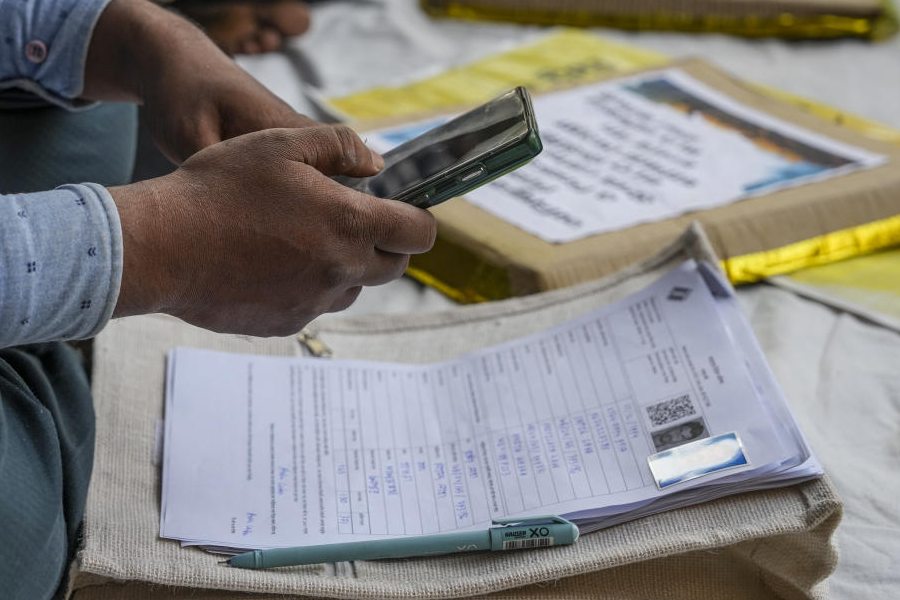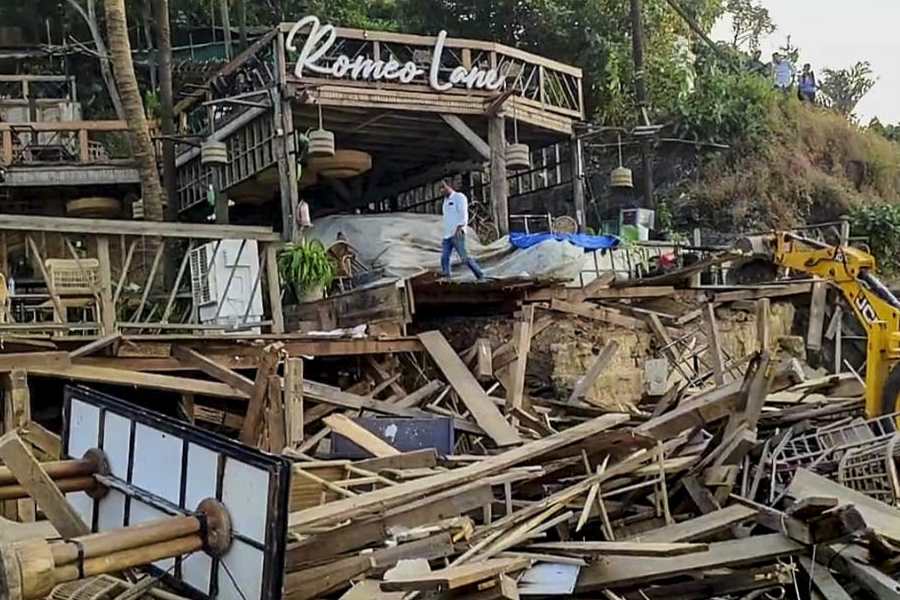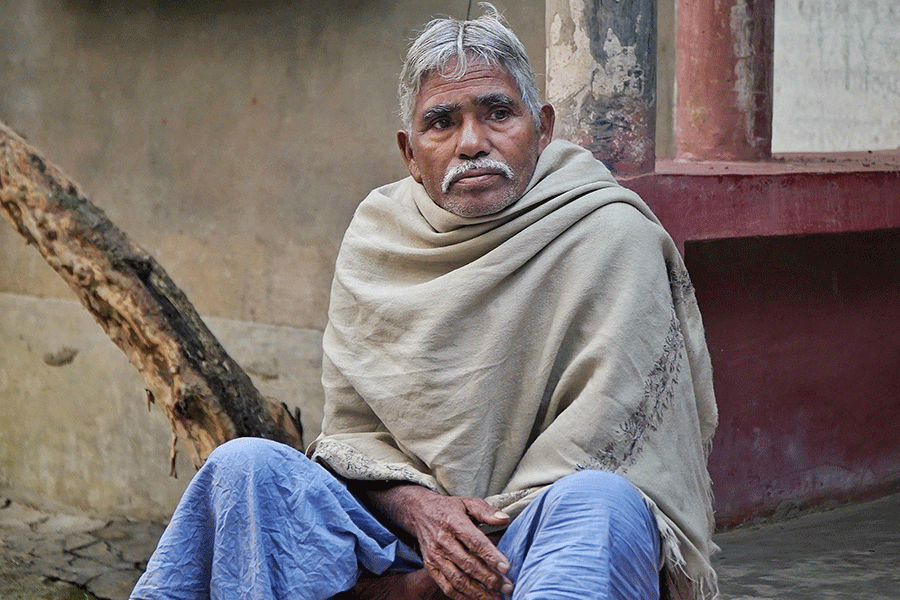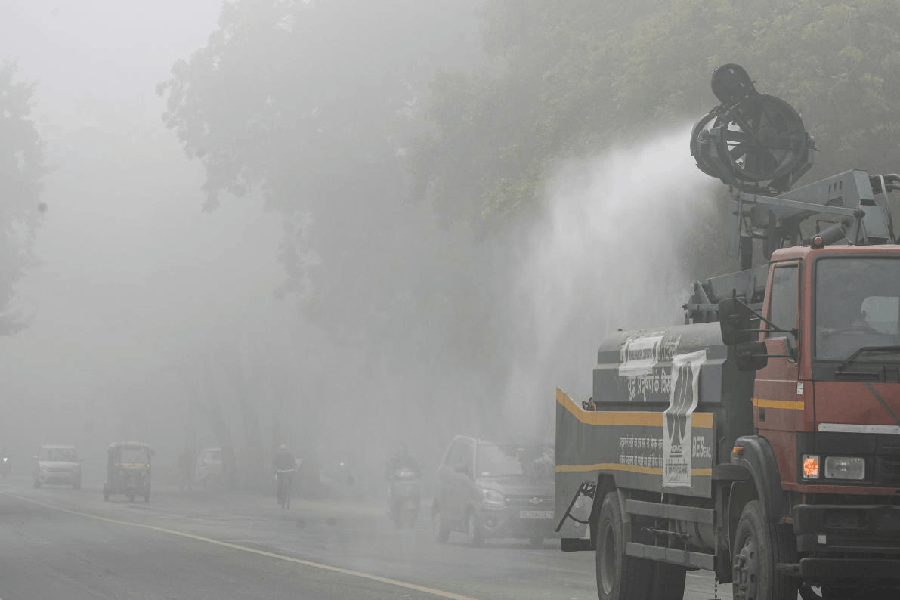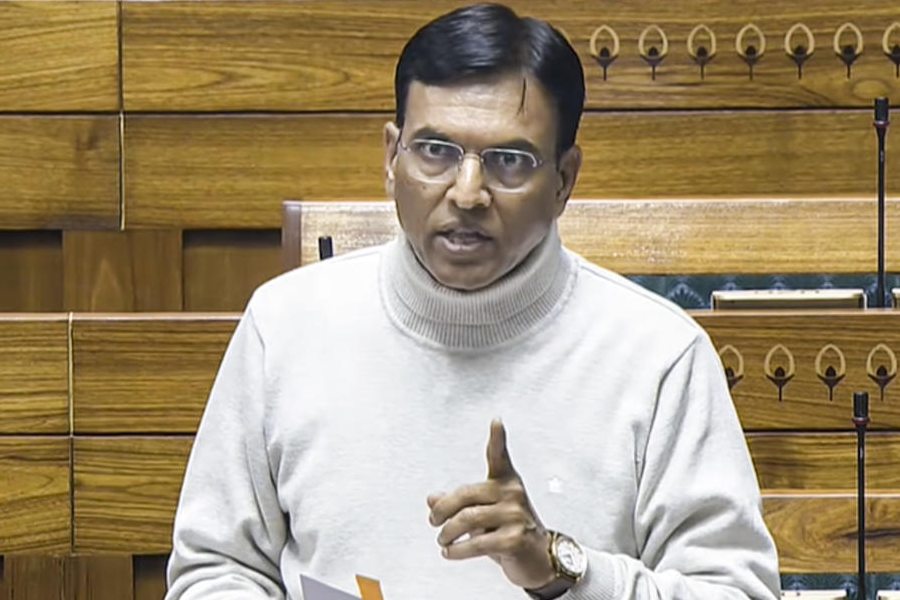Baghdad, March 24 (Reuters): Washington’s hopes of a quick-fire occupation of Iraq bled into the desert sand today as Iraqi troops fought back with guerrilla tactics, but the US commander of the invasion said his forces were closing in fast on Baghdad.
There was no evidence of weapons of mass destruction being used by Iraq in battle. Instead, Iraqi troops were fighting with machine gun-mounted Japanese pickup trucks against squadrons of the world’s most formidable battle tank, the US Abrams.
British Prime Minister Tony Blair said advance units were just 60 miles south of the Iraqi capital and predicted that a critical battle was fast approaching.
US General Tommy Franks described Iraqi resistance as “sporadic” and said his forces were intentionally skirting enemy formations in their cross-country march on Baghdad.
“Progress toward our objectives has been rapid and in some cases dramatic,” Franks said after 24 hours of setbacks that included the death and capture of US soldiers and the loss of at least one American helicopter.
Bringing back images of a similar American humiliation in Somalia, Iraq said today that farmers had shot down two US helicopters southwest of Baghdad and vowed to show the pilots on television, just as it did with other captured and killed soldiers on Sunday.
Franks confirmed the loss of one Apache Longbow helicopter. “The fate of the crew is uncertain right now. We characterise that crew, two men, as missing in action,” he added.
The news startled officials at the Pentagon, who huddled around television sets to watch.
There was similar dismay in 1993 when in one of the most stinging setbacks for modern US military prowess, Somali gunmen with adapted rocket-propelled-grenade (RPG) launchers brought down two Blackhawk helicopters in Mogadishu.
In a classic case of “asymmetric warfare”, ragged gunmen loyal to warlord Farah Aideed welded metal deflector plates to the rear-end of their RPGs to deflect the searing back-blast so they could shoot up into the air at the Blackhawks. The homemade adaptation worked with devastating effect.
Iraqi television showed pictures of the downed Apache in a field surrounded by Iraqis waving rifles. The black helicopter, still armed with guided missiles with US markings on them, appeared intact with no sign of having been shot down. Two helmets were shown at the scene but there was no sign of the crew in the television videotape.
Reuters photographer Faleh Kheiber later went to the scene and said the Apache was still loaded with at least two air-to-surface missiles. Eyewitnesses told him it had flown low over palm trees, allowing farmers and soldiers to fire at it.
Franks said the helicopter was one of “between 30 and 40 attacking a particular area”. He denied it had been shot down by farmers but did not say what had forced it out of the air.
CNN correspondent Karl Penhaul, accompanying the US Army Fifth Corps 11th Attack Helicopter Regiment, said the unit had been on a night-time combat mission targeting units of President Saddam Hussein’s elite Republican Guards.
He cited one of the pilots as saying they had run into a “hornet’s nest, a barrage of anti-aircraft fire” near the city of Kerbala, 110 km southwest of Baghdad, the closest fighting to the Iraqi capital since the war began last Thursday. “It was all they could do to defend themselves. They were unable to achieve many of their objectives. They had to return fire and get out of the situation,” he said.
Iraqi information minister Mohammed Saeed al-Sahaf told a news conference: “Farmers shot down two Apaches. We showed one today and might show the second and the pilots.”
“We are holding several other American and British prisoners and we may show some of them,” the minister said.
“They are supporting the criminals, the Zionist regime, and they are talking about the Geneva Convention, so we will continue showing whichever mercenaries fall into our hands.” “They show Iraqi civilians and lie to the world saying they are Iraqi soldiers,” he said. “This is not a double standard, this is despicable.” Television has shown hundreds of Iraqi soldiers surrendering to US and British forces since the war began last Thursday.
The Iraqi fightback has been sharpest around the southern city of An Nasiriyah. Iraqi forces on Sunday attacked and killed US forces holding two strategic bridges across the Euphrates River there, stalling advancing armour waiting to cross at that point. As Franks spoke at his headquarters in Qatar, Reuters correspondent Sean Maguire said US artillery had opened up on targets near Nasiriyah.





